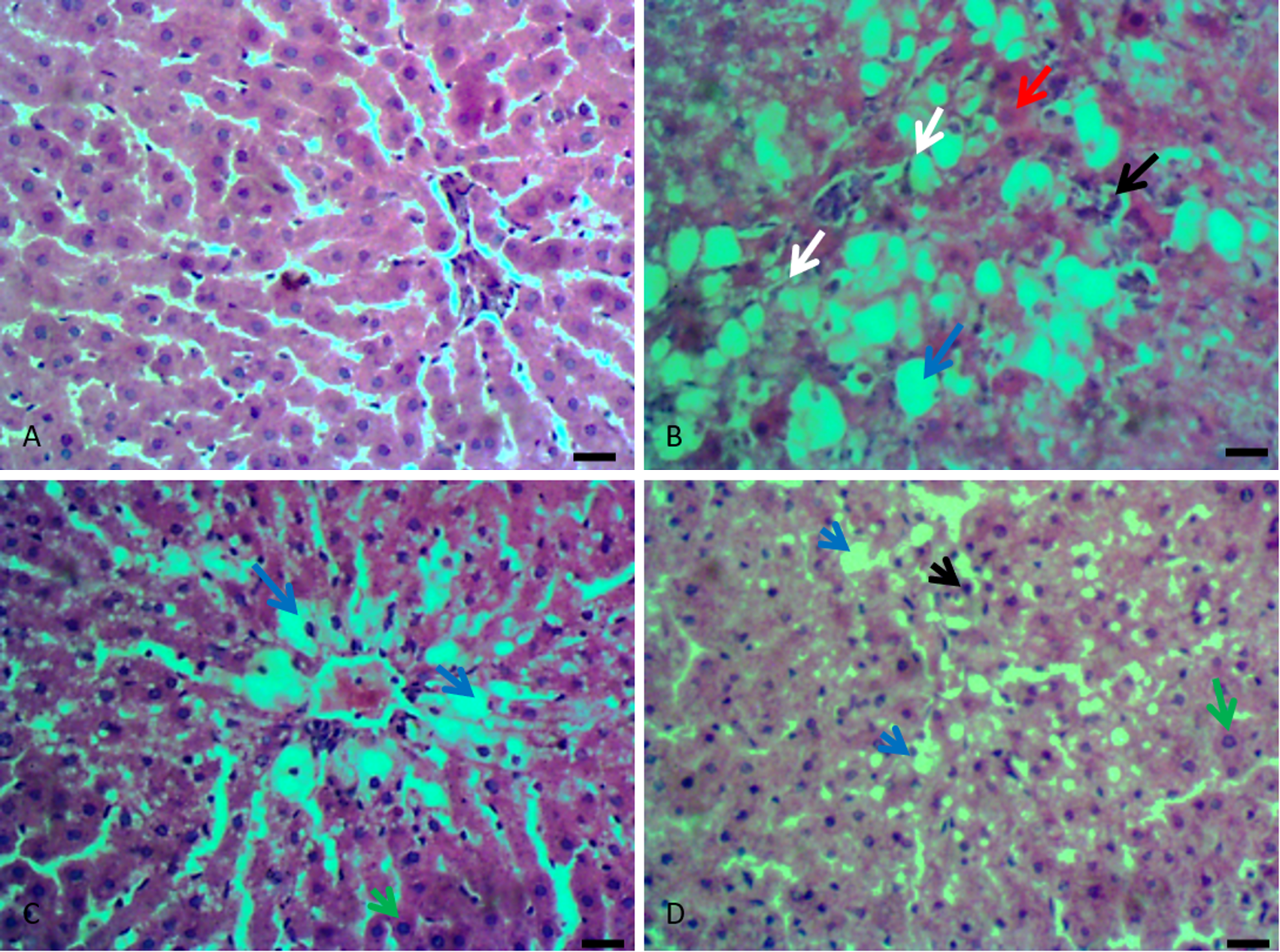Acalypha wilkesiana ‘inferno’ hydroethanolic leaf extract has protective effect on carbon tetrachloride-induced subacute toxicity in animals
DOI:
https://doi.org/10.15419/bmrat.v7i5.605Keywords:
carbon tetrachloride, hepatoprotective effect, medicinal plants, interleukins, Acalypha wilkesiana infernoAbstract
Introduction: Liver fibrosis is one of the most common clinical manifestations of hepatic diseases. However, though many synthetic drugs exist for the treatment and prevention of liver diseases, liver injuries still persist. The present study, therefore, sought to investigate the subacute protective effects of Acalphya wilkesiana against carbon tetrachloride (CCl4)-induced toxicity in animals.
Methodology: Liver injury was induced in experimental animals by administering CCl4 (1:1 v/v in olive oil, intraperitoneally (i.p.), twice weekly for 8 weeks) after pre-treatment with extract of A. wilkesiana (AWE). AWE (250 mg/kg) and Silymarin (120 mg/kg) were administered orally (daily for 8 weeks). The hepatoprotective effect was studied by assaying the activity of liver enzymes, such as alanine aminotransferase (ALT), aspartate aminotransferase (AST), alkaline phosphatase (ALP), and alpha-fetoprotein. The effect of the treatments on liver prooxidants (e.g. malondialdehyde [MDA]) and antioxidants (e.g. superoxide dismutase [SOD], reduced glutathione [GSH], glutathione peroxidase [GPx], and glutathione transferase [GST]), as well as inflammatory cytokines (e.g. interleukin [IL]-17, IL-23, nuclear factor kappa beta [NF-kB], and cycloxygenase-1 [COX-1]) and the histology of the liver were also examined.
Results: The activity of liver function biomarkers changed significantly upon CCl4 administration; increases in ALT, total and direct bilirubin, and some fibrosis indices (e.g. alpha-fetoprotein and APRI [p<0.05-0.001, compared with normal]) were observed. Co-administration of AWE with CCl4 restored these to normal levels. The intensity of structural alterations revealed that the AWE treatment has protective potential against subacute liver injury. AWE treatment also reduced the expression of IL-17, 1L-23, NF-kB and COX-1, underscoring its antiinflammatory properties.
Conclusion: The results of the current study generally suggest that hydroethanolic leaf extracts of A. wilkesiana inferno possess some subacute protective activity by improving liver function and inhibition of inflammation, and could be developed as a potent antifibrotic agent.

Downloads
Published
Issue
Section
License
Copyright The Author(s) 2017. This article is published with open access by BioMedPress. This article is distributed under the terms of the Creative Commons Attribution License (CC-BY 4.0) which permits any use, distribution, and reproduction in any medium, provided the original author(s) and the source are credited.
